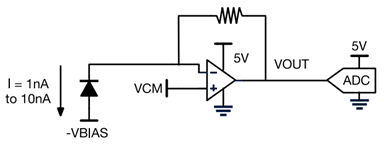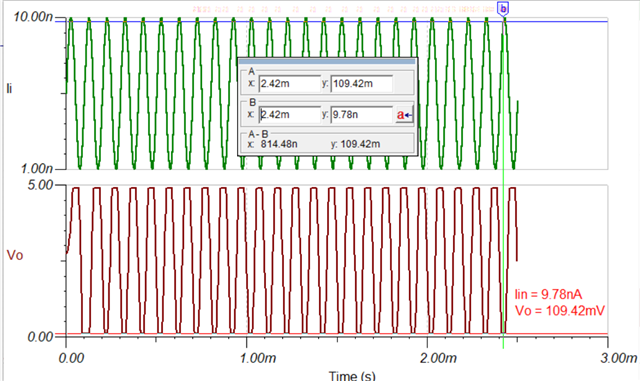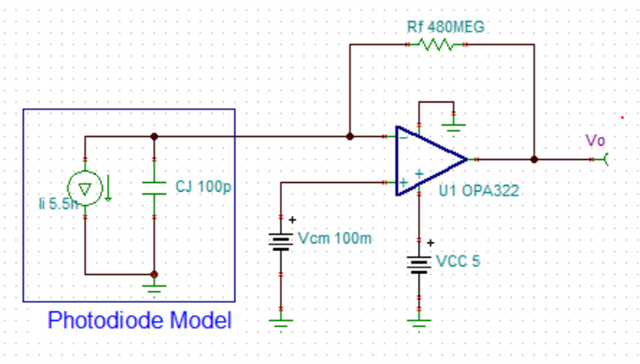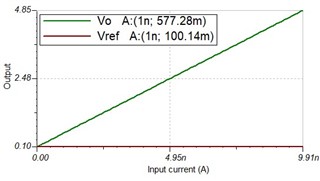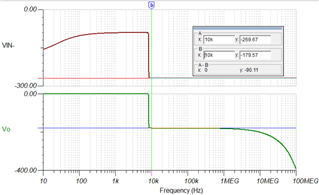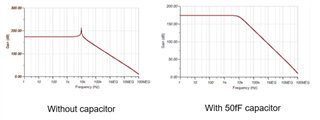Other Parts Discussed in Thread: TINA-TI
Hello,
I am designing the following basic photodiode current sensing circuit. I am holding my common mode voltage at 100mV and my resistance is 480MOhm. My goal is to be able to operate with a 10kHz input signal. The photodiode has a Cj of 100pF.
To calculate my transfer function: Vout = Ipd*Rf + Vcm = I * 480Mohms + 100mV
Using this transfer function I was able to calculate the minimum output voltage at 1nA to be 580mV. How is it possible that my ouput voltage is able to go lower than this minimum value of 580mV?
What are some additional design considerations when choosing an op amp for these types of applications?
